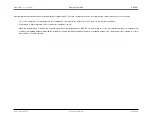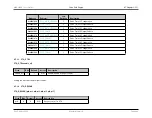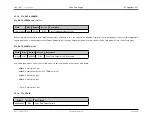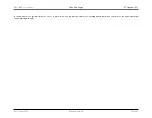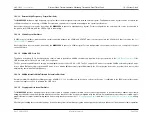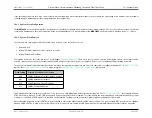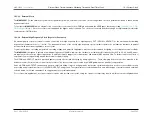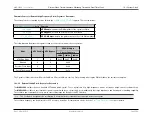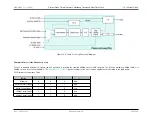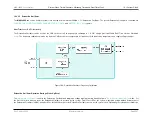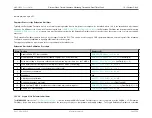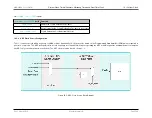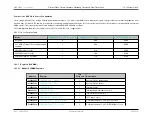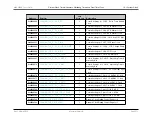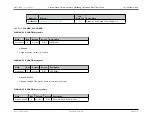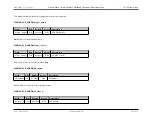
MAX32600 User’s Guide
System Clock, Timers/Counters, Watchdog Timers and Real Time Clock
10.1 System Clock
of the current system clock rate. Also, this provides a more variable (and not externally observable) clock to reduce the opportunity for an attacker to perform power
or timing analysis attacks against the cryptographic and security functions.
10.1.2
System Clock Configuration
The
MAX32600
clock subsystem provides a high degree of flexibility to optimize an embedded system implementation. The user has options to trade-off external
components depending on the circuitry required by the desired application(s). A block diagram of the
MAX32600
clock subsystem is provided in the
above.
10.1.3
System Clock Sources
The internal clock circuitry generates the system clock from one of the three clock sources:
1. External Clock
2. Internal Oscillator with an external crystal or resonator
3. Internal Relaxation Oscillator
The register controls for the clocks are in the Clock Manager (
). There, clock sources can be selected and/or gated off and clock scalars can be
selected. In general, most clocks are disabled by default to minimize total system power consumption. Refer to the Clock Manager Register Map for details.
The external clock and crystal are mutually exclusive since they are input via the same clock pin. The clock subsystem is configured through the
register; the
primary clock source selection
is made using the
CLKMAN_CLK_CTRL.system_source_select
register field.
Field Setting
Primary Clock Source Selection
b00
24Mhz Relaxation Oscillator divided by eight
b01
24Mhz Relaxation Oscillator
b10
High Frequency Crystal Oscillator
b11
48Mhz PLL divided by two
The Relaxation Oscillator accuracy is sufficient to run the core on-chip digital logic and all external peripherals. For
functionality, a 32kHz
XTAL/Resonator is required. For the USB peripheral, a frequency-accurate clock is required. This functionality can be provided by an external high-frequency crystal
oscillator or, if a 32kHz XTAL/Resonator is available, the Relaxation Oscillator can be used after firmware frequency calibration is performed.
An external high-frequency crystal (HFXTAL) may be required to achieve the highest precision ADC measurements. The most accurate ADC performance is obtained
when an 8MHz HFXTAL is used as the system clock source. However, in low sample rate ADC applications, the internal Relaxation Oscillator may be adequate.
Rev.1.3 April 2015
Maxim Integrated
Page 501
Содержание MAX32600
Страница 1: ...MAX32600 User s Guide April 2015...


